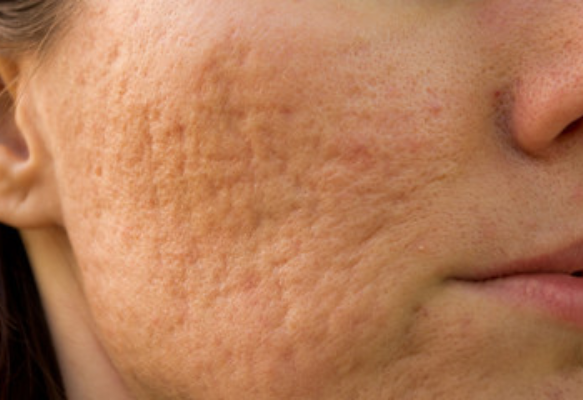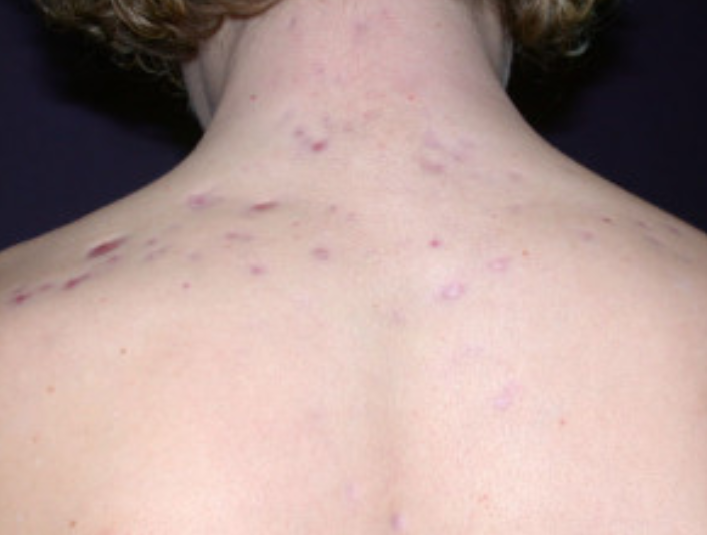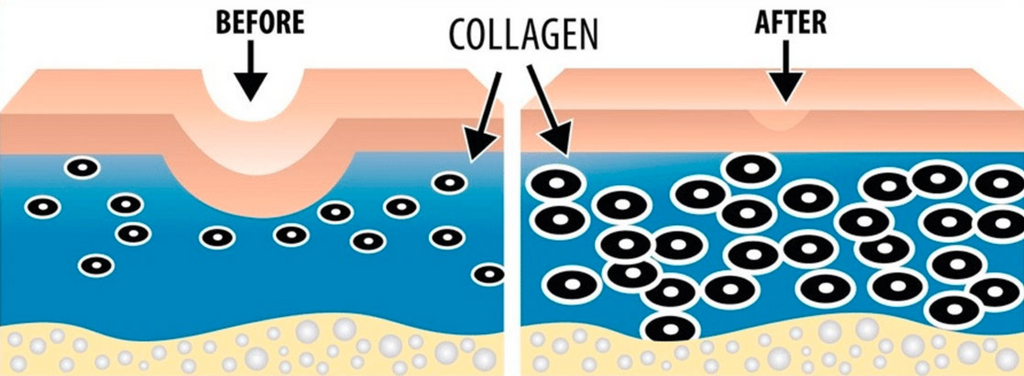Microneedling for Acne Scars: Reducing acne scars by microneedling

After battling with acne, most people have to deal with acne scars. The scars can last from several months to years, depending on the severity of the acne. In most cases, acne scars leave your face looking uneven and even unsightly in severe cases. This is where microneedling for acne scars comes in.
Finding the right treatment for acne scars is a challenge. Most do not work as effectively as we may want them to. Cosmetic surgeries that work are usually too expensive for most people. Therefore, a cost-effective way of treating acne scars that works is the solution most people are looking for.
Microneedling for acne scars is emerging as one of the most effective methods of reducing scarring. More people are using it to treat their acne scars. In our latest post, we tackle microneedling, specifically on its transforming effect on acne scars.
What is acne scarring?
Acne scars are hollow or raised scars that form below the uppermost layer of the skin tissue. They form as a result of poorly treated acne, which makes it hard for the skin to heal itself correctly. By incorrect healing, the skin develops an uneven texture, which we call acne scars. In severe cases, the scars can be unsightly, negatively affecting our image.

Why do we have acne scarring?
Acne scarring is a result of scars that are left after the treatment of acne. Acne is a condition where the oil glands of the skin are clogged up forming pimples, spots, and cysts under the skin. When clogged, oil glands fill up with oil, dead skin, and other skin debris.
Hormonal imbalance, inadequate skincare, and bacterial infection can lead to acne. Of the three, inadequate skincare is the most common cause of acne. When we practice inadequate skincare during active acne, it leads to acne scarring post-treatment.
Common practices that lead to acne scarring
- When we delay the treatment of pimples and breakouts: It is common for people to ignore a pimple or two. In some cases, people may ignore entire breakouts. Ignoring pimples and breakouts may lead to poor handling of acne once it sets in. By delaying treatment, acne can gradually spread across the face, covering wider areas. In most cases, this usually results in extensive acne scarring after treatment. Treating acne or breakouts as soon as they start will help prevent any future scarring.
- Inducing inflammation: Our skin gets inflamed when we rub against it aggressively or by using skincare products that are irritating to the skin. When suffering from acne, we want to keep the pimples as small as possible. It is more likely that large, inflamed acne blemishes will leave behind scars compared to the smaller pimples. Our goal is to keep the skin as calm as possible during the acne episode to prevent severe scar formation after treatment.
- Squeezing and popping pimples: Squeezing involves pressing hard around the pimple. It can easily cause inflammation, which will cause worse acne scarring. Further, popping pimples only drains the contents of the clogged oil glands. If scarring does not occur, another pimple can form, making an even deeper impression leading to potentially larger scarring. Always avoid the urge to squeeze or pop pimples.
- Failing to consult doctors: Most people end up with severe scarring because of late consultations or even none. Whenever we get breakouts, consulting with doctors is our first line of defense. It prevents any of the other listed causes from occurring as the doctor will advise and give treatment accordingly. Doctors will also help you identify potential acne scarring through your family's medical history.
Preventing acne scars
You can prevent acne scarring by properly taking care of your skin during the active acne phase. During this phase, avoid all the listed causes of acne scarring. Maintain a healthy diet that includes enough sleep.
Stress hormones such as cortisol are released when we have inadequate sleep. Cortisol causes flare-ups which result in skin conditions such as acne, psoriasis, and in some cases even eczema.
The discussion above on the causes of acne scarring and the prevention also applies to atrophic scars which we describe below. Atrophic scars result from pimples similar to those that cause acne; however, they arise in other parts of the body such as the back area.

By proper care of the pimples, while still active, we can prevent atrophic scarring. In cases where it has occurred, Microneedling will help reduce the scarring.
Preventing scarring at the active acne phase is crucial. Breakouts are bound to recur based on our lifestyles. There are potential triggers such as high fatty diet, hormones, and stress which we may not fully control.
Recurring breakouts will interfere with a home microneedling routine and the healing process post-clinic treatment. Therefore, the most important way to prevent scarring is by stopping breakouts before they happen and handling them effectively when they happen.
Find out more about acne care by Verywell health here.
Types of acne scarring
There are two categories of acne scars, depressed acne scars, and raised acne scars. Depressed acne scars are a result of the loss of tissue, whereas raised acne scars result from the overproduction of tissue. Depressed acne scars are arguably the most common type. Based on our earlier explanation of why we get acne scars, it is easy to see why depressed acne scars are common.
The following are examples of depressed acne scars,
- Ice-pick scars. These are deep, narrow, pitted scars.
- Boxcar scars. They are wide with sharply defined edges.
- Rolling scars. These are like boxcar scars but with sloping edges.
- Atrophic scars. They can be flat, thin scars or depressed scars.
For raised acne, hypertrophic acne is the only example. These are thick, lumpy scars to due overproduction of skin repair tissue. It is common for people to have more than one type of acne scars.
Microneedling for acne scars
Because of its collagen-inducing effect, many believe that microneedling can effectively reduce acne scars.

Effectiveness of microneedling for acne scars
Numerous studies have shown that microneedling effectively reduces acne scars. For instance, a 2015 study highlights that microneedling for acne scars is effective, relatively risk-free, and with short recovery time for patients. The study took place over three months, with the subjects receiving a total of 6 sessions within the time. Sessions were done every two weeks.
The encouraging results of the study led to the conclusion that microneedling is a simple, inexpensive way of managing post-acne scars. The study also concluded that patients require patience as microneedling takes time before its results start showing.
Further, many people have also documented on social media how microneedling for acne scars has helped them. There are many before and after images showing the positive changes people have experienced because of microneedling.

How to microneedle for acne scars at home
Microneedling at home is an easy, convenient process. The steps are similar to those we had listed in our previous posts. You can follow the steps here. The procedure is generally painless with mild irritation that ceases in a brief time.

For acne, microneedling at home twice daily will help improve your acne scars over time. Stretch your skin during the procedure to reach the deepest parts of the depressed scars. To complement the effects of microneedling, use skincare products that reduce acne scarring. Follow this link for the acne skincare products such as cleansers and serums. It is best to use facial cleansers before microneedling. Use a pH-balanced cleanser to avoid irritation. Apply other products such as oils, serums, and creams after microneedling for better absorption.
When microneedling at home, avoid microneedling areas that are still experiencing active acne. This will help prevent irritation in that area which will reduce future scarring. It will also prevent the spread of bacteria from the clogged-up glands to the rest of the face. For the best experience, get high-quality derma rollers.
How does microneedling for acne scars work?
Microneedling works in two ways,
- Inducing collagen production
- Aiding acne care drug absorption
Inducing collagen production
The body uses collagen to heal itself after injury. Because acne causes some form of injury to the face, the body produces collagen to heal the injured area, which usually leads to scar development. In some cases, the scars may be extensive and unsightly depending on the severity of the acne.
Microneedling works by inducing the body to produce new collagen to replace the old, unsightly scarring. It leaves the skin looking better and vibrant. Scarring on the face is less visible, and the skin appears healthier.
The skin also looks more even. In the case of depressed acne scars, the new collagen fills up the depressions leaving the skin looking even.
In some instances, the acne scarring may lead to an uneven skin tone. The newly laid collagen will also help even out the skin tone leaving the skin looking smooth.
Aiding acne care drug absorption
For acne scarring removal drugs to work, they must penetrate deep into the skin. Most topical applications take time to be absorbed into the skin, which affects how they work. In some cases, these drugs even fail to reach their targeted areas due to slow absorption.
With microneedling, drug absorption can be faster. Microneedling creates tiny holes with its many microneedles. These micro holes allow the skin to absorb topical applications faster. They also help the drugs reach their targeted area.
By working on two fronts, microneedling helps get rid of acne scarring faster compared to other available treatments. Aiding drug absorption also answers the question of undergoing microneedling while using other acne drugs.
Acne scar procedure at the clinic
In our previous post, we discussed microneedling at the clinic or in-office. The experience of acne scar microneedling is technically similar to microneedling for other benefits. As with the other cases, the advantage of in-office microneedling is the specialized care you get.
Your doctor will create a microneedling program suited to your needs. Follow up sessions will also be planned as the doctor follows your progress through the sessions.
The after immediate effects of microneedling at the clinic are different from the effects of microneedling at home. In our blog post handling microneedling before and after, we extensively discuss the likely effects you may experience after the clinic session. We also give post-care instructions which will be helpful post-clinic microneedling.
Does this really work? Derma rolling
Derma rolling is the equivalent of microneedling at home. So, does it really work? In theory, derma rolling should work, however, only practical examples can argue out its case.
Based on the video by Sarah Perkins, derma rolling is effective against acne scars. In this video, she gives a tutorial on how to microneedle for acne scars. She also explains her journey with derma rolling.
From the before and after images that she posted in the video; we can conclude that derma rolling works. Her acne scars and dark spots are clearly visible in her before photos.
Her acne scars are greatly reduced in most parts of her face after her microneedling sessions, with only a few depressed acne scars being visible.
In her video, she explains the importance of patience when derma rolling. The effects of microneedling take quite some time to be noticeable. Depending on each case, it may take upwards of 6 months to notice any significant changes. In her case, it took a year before she could see any changes on her face.
One of the most frequently asked questions is on the permanence of the effects of microneedling on acne scars. The effects of microneedling take time to settle in; however, once they do, they only require a little maintenance to retain them. Occasional microneedling, maybe once in a month, will help maintain the effects of microneedling.
Cost
Firstly, microneedling costs at the clinic may not be covered by your insurance provider, even if your dermatologist prescribes the procedure. The procedure is seen as cosmetic and not medical by nearly all insurance providers.
Now, depending on where you have it, the cost will range from $20 to upwards of $300. The more expensive option is the clinical option, which charges per session with an average cost of about $300. The derma rolling option is cheaper as derma rollers can cost as low as $20. We have really good options at that price point. You can shop here.
Time is also likely to affect the choice you make on cost. As stated earlier, you need a lot of patience for derma rolling. The changes take time to be noticeable; however, the trade-off is less than $100 spent for reduced acne scars. When you factor in the cost of supportive skincare products, you will spend around $200 in a year for the at-home experience.
Changes after microneedling at the clinic may start a bit earlier, but they also take some time, roughly four months before the changes become noticeable.
On cost, factoring in the other options available as treatment for acne scarring is also important. There are other options that may be invasive, expensive, and even time-consuming. For example, one of the treatments indicated for acne scarring is dermabrasion. According to the American Society of Plastic Surgeons, the average cost of dermabrasion was $1,249 in 2018. The cost is likely higher in 2020.
Further, the average cost is not the total figure. Other expenses such as anesthesia, operating room, and other related costs must also be considered making dermabrasion a costly affair.
When considering microneedling, compare its benefits with the cost and effectiveness of other working acne scar treatments.
Side effects
In the beginning, you will likely experience redness, inflammation, and maybe bruising. These minor side effects are quite common, especially for first-time patients. They normally clear out after a few days.
There are other detailed side effects categorized into; common, less common, and serious side effects. We explained this in our previous post. The side effects for microneedling are generally the same across their areas of application. As a rule of thumb, if you experience any side effect for more than a week, consult your doctor.
For derma rolling, the side effects are similar to microneedling at the clinic, they are milder and clear out is a shorter time. However, there are some instances where derma rolling can be hazardous. Most of these cases are because of improper use of derma rollers or using the wrong derma roller at home.
Derma rollers come in various categories based on the size of the microneedle. For home use, try and use products that are below 0.30mm to avoid any serious injuries. Derma rollers above 0.30mm may require a professional for them to be used safely.
To avoid any potential injuries or unnecessary side effects from derma rolling, learn how to use the derma roller appropriately.
Take away
Acne scars can be unsightly; therefore, most people want to get rid of them. They usually improve on their own over-time, but it can take quite some time before you notice any significant changes.
There are certain skincare products such as anti-aging serums that can help improve their appearance, but they may not clear the scar completely. Moreover, some of the effects of these products wear out once you stop using them.
With microneedling, you get benefits that will last longer compared to other treatments in the market. Microneedling allows clearing of acne scars with two approaches, which makes it more effective. Also, with either the at-home option or the in-office option, you will still get your desired results.
Microneedling also has a host of other benefits including rejuvenating your skin, clearing wrinkles, and clearing fine lines. Its other advantages give it more value for money against other treatments.
After considering all things, we would advise microneedling to get rid of acne scarring on the face. Consult your doctor to get the green light on microneedling.



Leave a comment